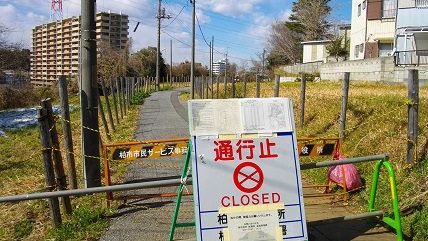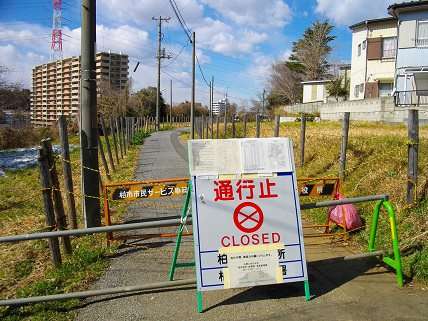Raising the EPA Radiation Limit Will Save Thousands of Lives and Billions of Dollars
Radiation limits were far lower than science justified and caused hundreds of billions of dollars of economic loss to America and the world.


The EPA is raising the radiation threat level by a factor of 350. That may sound unbelievable but it is assuredly a good thing: The previous limits were far lower than science justified and caused hundreds of billions of dollars of economic loss to America and the world.
The trigger for the change was the government recognizing the ramifications of two things. The first is the reality of nuclear terrorism. The Government Accounting Office (GAO) has recently insisted that the EPA establish realistic limits in accordance with the latest science. Under the old limits, a tiny "dirty bomb" explosion in an American city would have meant evacuating hundreds of thousands of people.
The second is Fukushima. After the catastrophic meltdown at the Japanese nuclear power plant in 2011, some 130,000 people were forcibly removed from their homes in accordance with strict radiation standards. This resulted in the unnecessary and unfortunate deaths of some 1600 elderly and ill persons. Yet no residents died—or even became ill—from the radiation. Even so, Japan closed down 48 nuclear plants and Germany announced it would close all of its plants. The cost to their citizenry in higher electricity prices—and higher carbon emissions—is staggering.
The cost to U.S. citizens is staggering as well. Ultra-low limits have delayed and prevented the construction of new nuclear power plants, added billions to the cost of refurbishing old reactors and Superfund clean-up sites, scared Nevada residents into opposing the opening of the Yucca Mountain nuclear waste storage facilities, and triggered panic whenever there has been a slight increase in radiation almost anywhere for any reason. One remembers the Three Mile Island nuclear leaks, where residents were exposed to less radiation than they got from the granite building blocks at the Senate hearing room when they testified.
Fortunately, the EPA is making changes that acknowledge the shortcomings of ultra-low radiation limits. The EPA has now asked for public comment on changing its standards for nuclear power plants. The deadline was June 4.
Further, in Florida, the EPA has given up on enforcing a very expensive radiation cleanup under the old rules. This is a tremendous move that has nevertheless come under attack from environmental extremists who promised to resist the new rules even if "health effects prove reliable." Some 100 watchdog groups have joined the attack.
Much of the reason for the EPA's prior low exposure fears comes from a theory in computer models that the cancer risk is directly proportional to the dose of radiation. This is untrue below the 10 REM threshold of exposure as is well detailed in a Forbes article. Yet the theory, called LNT (linear no-threshold model), has done untold damage to America. (Further explanation and links are available in my earlier article Terrorism and Radiation.) The EPA change specifically refers to one time events, although its historic 15 millirem limit barely distinguished between short and long term exposure. Nuclear workers with prolonged exposure face a different risk. The first ICRP (International Commission on Radiological Protection) recommended a "tolerance dose" of no more than 70 REM per year (0.2 roentgen per day), but more research needs to be done in this area, e.g. a 40 hour work week of exposure compared to continuous exposure. EPA's limit was a maximum 5 REM over a full year.
The new nuclear limits should prompt the EPA to modify the extreme 15-25 millirem limits in other areas under its jurisdiction. Specifically, these should include allowing new nuclear electric plants to follow the same rules. Clean-up of past nuclear waste disposal sites would be another area of multi-billion dollar savings. The difference in cost is astronomical. Southern California Edison has now shut down its San Onofre nuclear plant because of the high cost of replacing steam generators. Higher radiation limits might make the repairs economically viable. The Yucca Mountain storage site costs should be recalculated from the past 15 millirem limit using the new risk numbers. However, the EPA has also specifically stated that the new guide "will not affect the agency's Superfund authorities, existing cleanup regulations or current health and safety standards." Currently the EPA's Superfund clean up standards are based upon a risk factor of 1 person in 10,000 possibly developing cancer under LNT models. LNT theory does not distinguish between one-time exposure and continuous exposure.
Then there is the Nuclear Regulatory Commission. Using the same old EPA limits, it fanned the flames of panic in Japan by urging Americans up to 50 miles away to flee Fukushima. It should also update its risk analyses.
What's missing now are some reliable analyses of the billions of dollars in savings that will result from using the new limits. In the nuclear weapons programs, the new limits should be analyzed and new safety rules put in place. Canadian nuclear physicist Jerry Cuttler, to whom I am indebted for much of the above information, suggests that the ALARA limits (as low as reasonably achievable) should be changed to AHARS (as high as reasonably safe).
Equally important, the EPA change brings attention to the issue that economic costs can be considered in its rulings. Historically, EPA denies this premise based upon its original mandate, which does not call on the agency to consider economic costs, it claims. The EPA has won in court with this argument. Most recently, Politico reported that "a three-judge panel of the U.S. Court of Appeals for the D.C. Circuit upheld EPA's rule, known as MATS, denying challenges from states, utilities and industry groups which argued the rules came out of a flawed regulatory process and illegally imposed exorbitant costs on power producers that will force dozens of power plants to close down." The industry argued that this decision would substantially raise electricity rates for consumers in much of the nation. EPA decisions are based on the same linear no-threshold models that any minimal exposure will cause cancer or asthma among some proportion of the population. But under this theory, even tiny amounts of sunlight are a threat to some human beings. As science advances to allow measuring parts per billion or even per trillion, EPA has proceeded to continuously tighten its limits.
Other skeleton in the EPA's closet are environmental limits caused by its policy of "chasing the last molecule." If EPA could be forced to modify its radiations limits, what about its other extremes? Take sulfur, for example. Its prevalence has already been reduced by 90 percent. Still, using its now discredited LNT theory, EPA is has ordered refiners to eliminate the last 10 percent. This will add between 6 and 9 cents per gallon to the cost of gasoline.
There is another major implication. Many if not most of the EPA's other limits on pollutants and carcinogens are also deduced from the faulty LNT theory. Eliminating 90 percent of some chemical or dust is often easily accomplished, however, eliminating the last 10 percent can cost billions more than the first 90 percent. For example, a Wall Street Journal report on ozone explains that new EPA limits reducing ozone from today's 75 parts per billion to 60 to 70 ppb would cost industry some $90 billion, according to the EPA itself. These are the costs that many industries are howling about and a real reason that Americans' standard of living has stopped increasing. Much analysis, beyond the scope of this report, needs to be researched for dozens of other excessive limits imposed by Washington, D.C.
The yearly cost of unnecessary EPA regulations is in the many hundreds of billions of dollars, reducing wages and hurting the world's standard of living. And yet these positive modifications are under severe attack from green extremists. Rather than fighting sensible and cost-saving reforms, they should help rescue the legitimate environmental movement from far-left activists whose hysterical opposition to logical standards truly threatens world prosperity.
Mr. Utley is publisher of The American Conservative. He has written widely on energy, radiation, and civil defense. He was a foreign correspondent in Latin America for Knight Ridder newspapers and, for 17 years, a contract commentator for the Voice of America.


Show Comments (109)